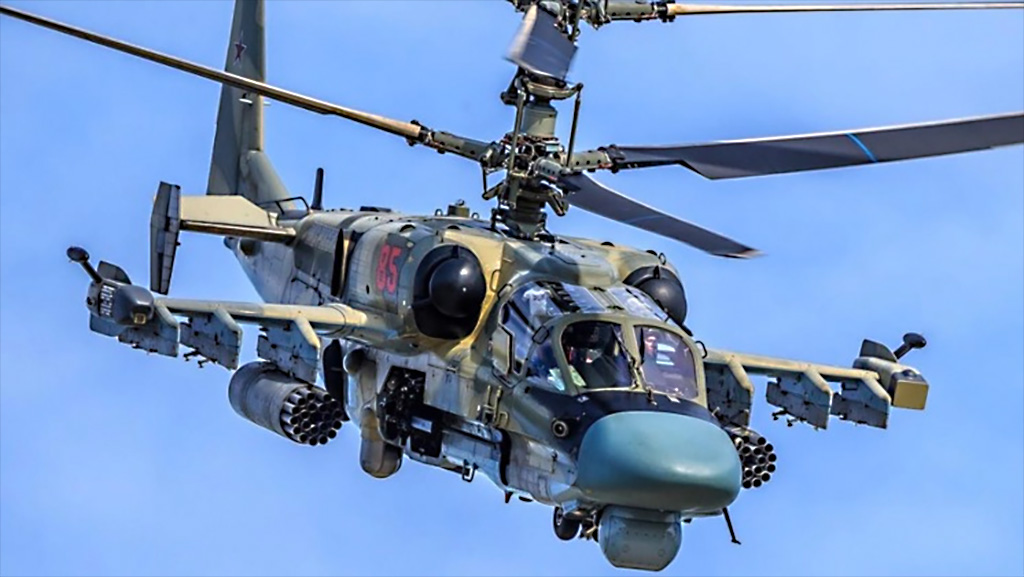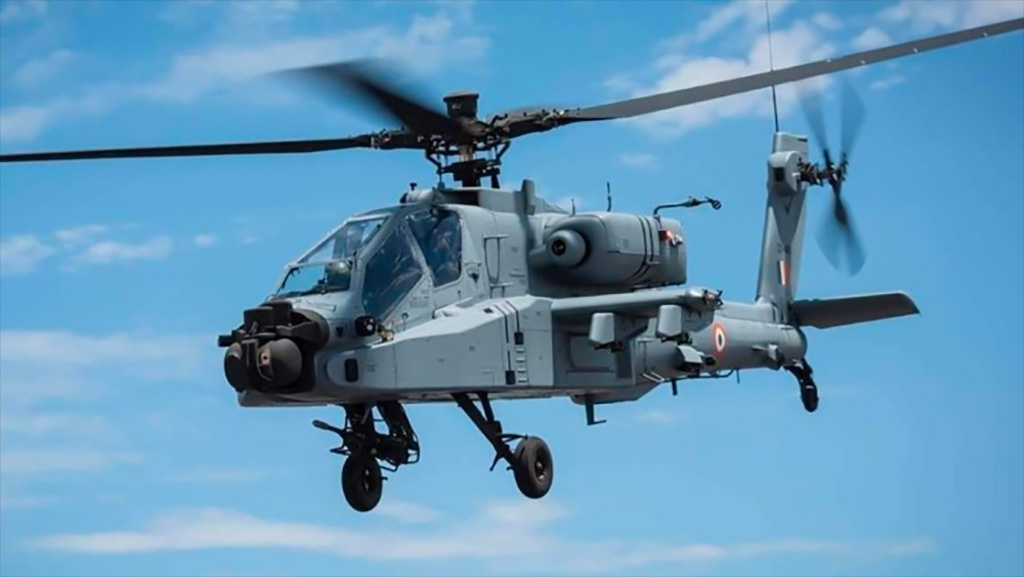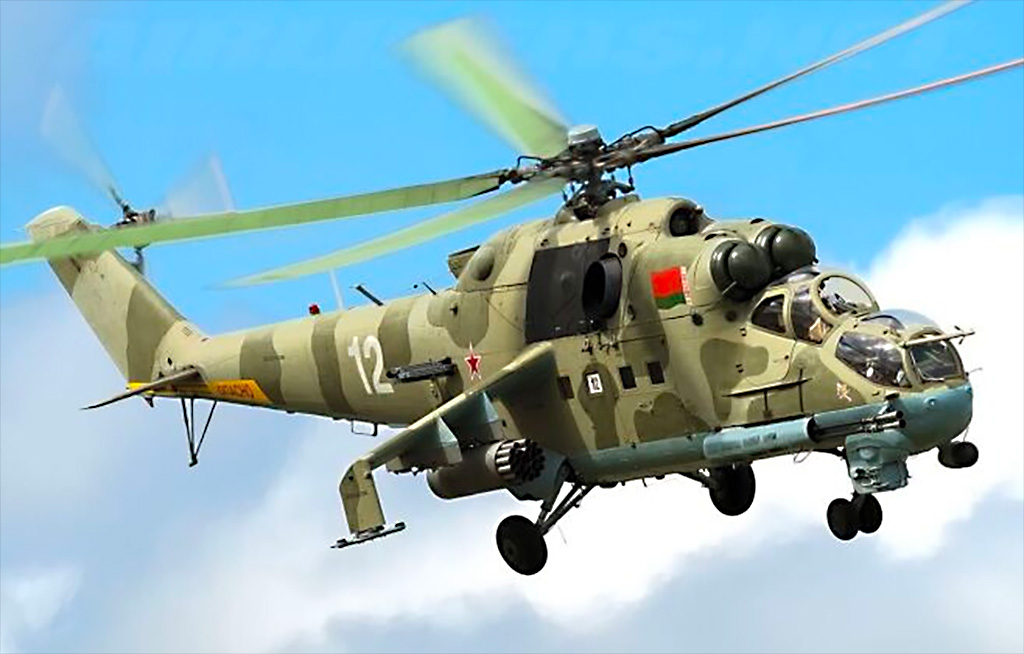
Major militaries around the world have experimented with the development of attack helicopters since the 1940s, although it was only from the late 1960s that such aircraft began to receive serious investment leading them to be considered indispensable assets by the final decade of the Cold War.
Major militaries around the world have experimented with the development of attack helicopters since the 1940s, although it was only from the late 1960s that such aircraft began to receive serious investment leading them to be considered indispensable assets by the final decade of the Cold War.
Advanced heavyweight attack helicopters are considered among the most complex and expensive military vehicles to build, with even most larger armies fielding only a few dozen and many deploying none at all. The aircraft are prized for their ability to loiter and provide close air support to ground forces including against enemy armour and as part of amphibious landing operations. Attack helicopters first saw extensive use in Soviet and Afghan government counterinsurgency operations, where the Mi-24 gained a fearsome reputation and was considered one of the most dangerous assets by Islamist militants fighting against them. Attack helicopters were also used by both sides during the Iran-Iraq War, which was waged simultaneously to the war in Afghanistan and saw the largest ever helicopter-on-helicopter battles in history.
Moreso than most fixed-wing combat aircraft, attack helicopters are almost purely tactical assets and have little strategic value. Their ability to serve as effective force multipliers for ground forces, however, makes them particularly highly prized – with multiple countries investing heavily in fielding them to ensure their armies have the best close air support possible. Their value was most recently demonstrated in the second half of the 2010s during Russian and Syrian counterinsurgency operations against the Islamic State terror group and Al Qaeda affiliated jihadist forces such as the Al Nusra Front. While unable to carry passengers, powerful attack helicopters are prized for their sensors, heavy firepower, speed, endurance, and survivability against attacks from the surface such as RPGs. Attack helicopters remain a field where Russian and to a lesser extent U.S. products retain a considerable lead in performance overall competitors, with a listing of the world’s top aircraft being dominated by the two countries. A look at the five most capable attack helicopters in the world is given below.

Ka-52 Alligator
One of the few heavy attack helicopter designs to enter service since the end of the Cold War, the Ka-52 began serial production in 2008 with an estimated 155 currently in Russian service. The aircraft’s far higher cost relative to other Russian helicopter designs has limited its export sales, with Egypt being the only client and acquiring 46 navalised variants for the decks of its Mistral Class assault carriers. The Alligator’s complex coaxial rotor system typical of Kamov’s designs makes it much more efficient than its domestic and foreign competitors, providing an increased payload and endurance for the same amount of engine power as well as greater quietness in the air and compactness on the ground. The helicopter is particularly prized for its heavy armament, with includes twelve wing hardpoints as well as cannons. These can accommodate weapons that are far from conventional for an attack helicopter, including Kh-31 cruise missiles which are able to fire on warships over 1300km away – a kind of engagement range usually only seen on fighters or bombers. At the lighter end, the aircraft’s ATAKA and Vikhr rockets can penetrate up to 950mm and 1000mm of armor respectively with the latter having an impressive range of over 12km.

Mi-28NM Havoc
Russia is the only country that produces more than a single kind of high-end heavy attack helicopter, and alongside the Ka-52 its Mi-28 is one of its more expensive models second in price only to the alligator. The aircraft has been in service since 2009 and has been sold to Algeria and Iraq while seeing extensive combat in the Russian Air Force in Syria. Although it is less well optimized for an anti-shipping role or air defense suppression than the Alligator, the Mi-28 can carry up to 16 anti-tank missiles or 80 80mm unguided rockets providing tremendous firepower against enemy armor and infantry. In terms of its flight performance, firepower, survivability, and ease of maintenance, the Mi-28 is considerably more capable than its American rival the Apache and is famous for its ability to fly backward. The Mi-28NM, the latest variant of the helicopter, was deployed for combat operations in Syria from 2017, with its effective performance leading the Russian Defence Ministry to sign contracts for the supply of 98 more of the helicopters by the end of 2027. The enhanced variant represents a very significant improvement, with new VK-2500P engines, a 13% increase in speed, all-around visibility provided by new sensors, and an upgraded fire control system among other notable enhancements.
The Mi-28NM can notably be armed with R-74M infrared-homing air-to-air missiles, the same as those used on Russia’s latest fighters jets, which can also be used to neutralize cruise missiles and even stealth targets. This provides it with a major advantage in engagements against enemy helicopters, which could be similar to the helicopter-on-helicopter mass battles of the Iran-Iraq War, with no rival design having comparable anti-aircraft firepower. Russian military sources have claimed that Mi-28NM units could seek to capitalize on the aircraft’s ability to hide behind terrain and evade detection to ambush enemy aircraft.

AH-64E Apache
Following its first flight in 1975, the AH-64 Apache attack helicopter saw a long and difficult development until it was ready to enter service 11 years later in 1986. The helicopter was developed primarily to provide close air support against enemy tanks and was to be considerably heavier and better armored than its predecessor the AH-1 Cobra, and carry more firepower. Despite its age, the Apache remains by far the most capable Western attack helicopter in terms of combat capabilities with no other Western designs competing in the same range. The aircraft is particularly prized for its ability to operate at high altitudes, and in the case of more modern variants for its powerful sensor suite including the Longbow Radar and its modern avionics. The helicopters can carry up to 76 Hydra 70 70mm unguided rockets, or up to 16 AGM-114 Hellfire anti-tank missiles. The helicopters can notably also be equipped with Stinger short-range air to air missiles to neutralize more minor threats such as drones and other helicopters at close ranges.
The Apache is a fast-aging design, although very considerable investments have been made in upgrading it which have focused heavily on sensors and armaments ensuring that it remains robust and viable. The difficulty maintaining the aircraft, however, has been cited by a number of experts as an outstanding disadvantage, as have reliability issues with its sensor suite particularly when operating over water. While the end of the Cold War delayed the Apache’s phasing out of service, replacement programs including the Future Attack Reconnaissance Aircraft (FARA) are currently being pursued.

Mi-24P/Mi-35 Hind
Entering service from 1972, the Mi-24 Hind is widely considered the most formidable attack helicopter of the Cold War era and has proven highly capable in multiple theatres. Although post-Cold War upgrades to the design have been less extensive than those made to the Apache, it is still considered one of the leading aircraft of its kind with modernized Mi-24P variants seeing extensive combat against heavily armed insurgents in the Syrian theatre. The Hind is the world’s favorite attack helicopter by a considerable margin with almost 60 current operators, compared to just 17 for the Apache and two for the Mi-28. The latest variant of the aircraft, the Mi-24P-1M, boasts an AESA radar, a new modular direct infrared countermeasures system, an autopilot, a superior power supply unit, and an OPS-24N-1L navigation and targeting station, and was reportedly developed based on lessons from combat experience in the Syrian theatre. The Mi-24’s excellent flight performance allows it to maneuver very close to the ground alongside infantry and armored units, including strafing urban areas at near street level. Another enhanced variant, re-designated as the Mi-35, benefits from some technologies that were developed for the Mi-28 including the same tail rotor system

Z-10M
Attack helicopters remain one of the few fields in which China’s defense sector still remains behind its American and Russian counterparts, with its Z-10 being overall less capable than the Apache or modern Russian designs but having seen considerable improvements to its performance since it entered service. The latest variant, the Z-10M, is formidable and replaces the old WZ-9 turboshaft engine with the more powerful WZ-16 which improves its flight performance and its endurance. This also allows it to deploy up to 16 HJ-10 anti-tank missiles which provide firepower more on par with the latest U.S. and Russian designs. The new version of the helicopter also benefits from active and passive countermeasures, a missile approach warning system, a radar warning receiver, an infrared jammer, and appliqué graphene-based armor panels, all of which serve to significantly improve survivability. Its exhaust and side structures also appear to be conformal and rounded in an attempt to increase stealth characteristics. One notable advantage the Z-10 has over heavier more complex rivals is the ease of maintenance, low operational cost, and high availability rates, which could become more significant as the performance gap between it and rival designs narrows.

